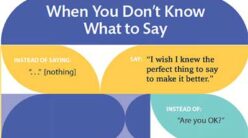Popping a pill isn’t the only way to find relief from chronic pain. You can also help ease your discomfort with these natural, research-based approaches to pain management.
Pain is frightening. Everyone has dealt with pain at one time or another, but if you’re someone who has chronic pain, it’s easy to become afraid and overwhelmed by the thought of living with pain every single day for the rest of your life. That’s why it’s so tempting to reach for the first—and easiest—thing you are offered to relieve the pain. Unfortunately, this is usually pain medication, which can create another set of health problems and dependency.
As someone with multiple sclerosis, I experienced chronic pain that was physically debilitating and emotionally devastating until I decided to be proactive in removing as many obstacles to wellness as I could. As I became more consistent with my self-care, I experienced fewer and fewer bad days. Last year I only experienced two painful flare-ups—a true health care success story.
If you are on pain medication or struggle with pain, consider these lifestyle changes that can be effective complementary techniques:
1. Master your mind
Pain is perceptual, which means your brain plays a major part in how you perceive pain. That’s why different people have different responses to painful stimuli.
Sometimes when you are experiencing aches and discomfort, all you can think or talk about is how bad you feel. But when you learn to change the way you talk about pain, your perception of your level of pain will lessen. For example, when someone asks how you’re doing, instead of saying “I feel terrible,” say “I feel better today than I did yesterday.” As you gradually change the way you talk to yourself and others about your pain, it will become more natural and easier to find positive things to say.
2. Keep a pain journal
Pain is a tricky opponent, and it will lie to you, making you feel like you will never have relief. Outsmart pain by keeping a pain journal, a place to record your pain levels, self-talk, diet, exercise, medication, and other pain management techniques. It may seem unnecessary to keep a record, but you’ll soon discover that a pain journal can be very useful at medical appointments, in therapy, for personal reflection, and to help you identify patterns and triggers. Having something written down empowers you to determine what is and isn’t working.
3. Exercise—even when you don’t want to
Exercising may be the last thing you want to do when you are in pain, but aerobic exercise is an important pain management technique. Many chronic pain patients report they are afraid exercise will cause greater pain. But avoiding movement actually increases pain and disability in chronic pain patients. The National Institutes of Health recognizes exercise as a pain intervention method that improves both physical function and pain severity with few adverse effects.
That being said, it is important to speak with your doctor and start with a realistic exercise program. For example, don’t self-sabatoge by making your first workout a five-mile run. Twenty minutes of low-impact aerobic exercise, such as walking or swimming, each day will have a positive impact on your health, mood, and pain level. Gentle stretches can also help increase flexibility, strengthen your body, and enhance your range of motion.
4. Talk it out
Because pain is perceptual, it helps to talk about it with someone who can provide honest feedback. Speaking with a qualified therapist is helpful, as they allow space for you to talk about your pain but also require you to take responsibility for your pain management.
Qualified therapists understand that often patients with chronic pain also suffer from anxiety and depression. All of these conditions must be addressed because they can feed off of each other. Fortunately, many of the lifestyle changes that help with chronic pain also help relieve anxiety and depression.
5. Get to the point
Acupuncture is a treatment that involves the insertion of very fine needles into specific pressure points in the body. It releases endorphins, the body’s natural painkillers, and increases the production of serotonin, a chemical involved with mood. While acupuncture is often met with skepticism, research is finding that acupuncture can help ease certain chronic conditions, such as pain in the lower back, knees, and neck. It also may help prevent migraine headaches and reduce the frequency of tension headaches.
If needles make you nervous, acupressure is another option. Instead of inserting needles, the practioner uses their hands to apply deep pressure to specific areas of the body.
6. Rest
According to the National Institutes of Health, 53 percent of chronic pain patients have clinically significant insomnia. To fall into a restful sleep, your nervous system has to calm down, but people with chronic pain often have an overactive nervous system, which makes falling, and staying, asleep difficult. Unfortunately, poor-quality sleep makes you more pain sensitive. This can quickly develop into a vicious cycle—you can’t sleep because you are in pain, and you are in pain because you can’t sleep.
While insomnia is a medical condition that your primary care doctor can help you with, there are also things you can do to help yourself. Create habits that train your brain to wind down and recognize it is time to rest, such as:
• Go to bed and get up at the same time every day.
• Create a bedtime ritual in which you do the same things in the same order every night. For example, in the hour before going to sleep, you can take a hot bath and read an inspiring book.
• When you are in bed, don’t look at your phone, computer, or TV.
• Keep the lighting in the bedroom low, and increase your exposure to sunlight during the day.
7. Watch what you eat
Fred Tabung, PhD, a researcher at the Department of Nutrition at Harvard’s T. H. Chan School of Public Health, warns about the negative effect diet can have on chronic pain. He asserts that chronic pain is often the result of chronic inflammation, and chronic inflammation is often caused by diet. Tabung says this is actually great news because diet is something you can change, thus reducing chronic inflammation.
A basic anti-inflammatory diet includes staples such as whole fruits and vegetables (especially dark leafy vegetables), nuts, legumes, and whole grains. Foods that increase inflammation, including sugar, animal products, and processed foods, should be avoided.
As with any lifestyle change, changing your diet can be difficult and takes time. Start slowly by finding one or two recipes that you like. Make sure you are telling yourself you are excited about trying new foods instead of viewing the diet as a punishment.
8. Recognize your triggers
Everyone responds to stimuli differently, so you have to learn to pay attention to your body and your personal pain triggers. If a junk food binge causes a painful flare-up, avoid junk food—even if you love the taste. If you notice your pain level dramatically increases when you become overheated, always be prepared to protect yourself from the heat.
As you learn to pay attention to your body, you’ll likely notice that the major triggers are obvious, but the subtle triggers take time to detect and understand. Be patient with yourself, and keep notes on what you observe.
9. Make adjustments as needed
People with chronic pain will often try to ignore their pain in order to be there for others. While you don’t want your pain to control your life, you do want to pay attention to the cues your body gives you and make necessary adjustments. For example, if you want to plan a fun day with your family, you might need to skip a physically demanding day at an amusement park and opt for a quieter day of games and activities at home.
The key is to avoid the two extremes: at one extreme, you push yourself too hard and do too much, and at the other extreme, you use pain as a constant excuse and end up doing nothing. Find a healthy, balanced approach, and adjust it when you have good or bad days.
10. Take a personal inventory
To get a good assessment of what works and what doesn’t in your pain management, ask yourself these questions, and write down your honest answers.
What activities do I enjoy that I can do on good days, the days when I’m not in the most amount of pain?
What positive activities can I do on bad days, when I’m in a lot of pain?
What household chores are too difficult? How can they be modified to be made easier?
At work, what adjustments could make it easier and more comfortable for me to do my job?
What people in my life encourage me to be the best I can be? On the other hand, who reinforces the helplessness I sometimes feel? What can I do to make sure I spend more time with the people who empower me and less time with those who allow me to be less than my best?
It may feel overwhelming or unimaginable to become healthier, stronger, or pain free, but it is possible. You don’t have to do it all at once. Choose one or two lifestyle changes that are realistic for you right now. As your pain level decreases, you will feel confident and strong enough to make more changes. And what was once a vicious cycle of pain can become a cycle of healing.
Based in Mississippi, Jenny Flores is a freelance writer who specializes in health and wellness, food, gardening, and natural living.






